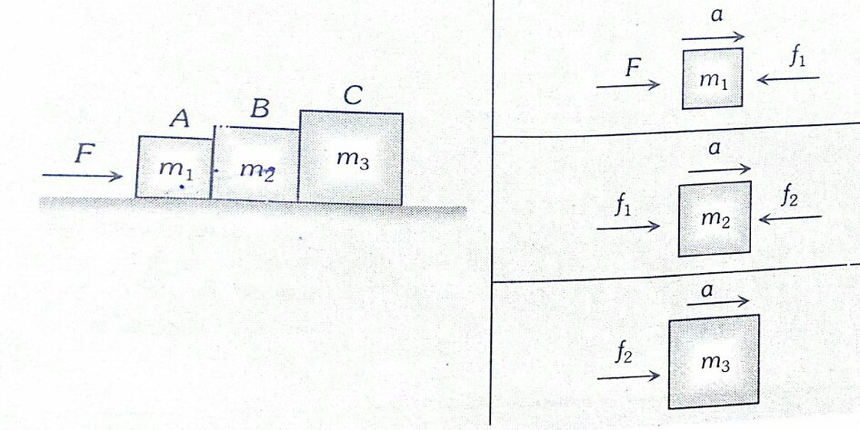How To Prepare Force And Laws Of Motion For NSEJS
The National Standard Examination For Junior Science exam syllabus(NSEJS syllabus) has questions mainly based on Class 9 and 10 science syllabus. Also knowledge of basic science and mathematics till Class 10 is required to solve the questions of NSEJS. Force and Laws Of Motion is an important chapter as it is a prerequisite for the chapter Work and Energy. Let us see how you should prepare it for NSEJS.

NSEJS Physics Syllabus For Force And Newton's Laws
Force and motion
Newton’s laws of motion
Action and reaction forces
Inertial and mass
Force and acceleration
Momentum and conservation of momentum
NSEJS Preparation Tips For Force And Laws Of Motion
Cover all the concepts NCERT Physics Class 9 chapter Force And Laws Of Motion
Solve problems from NCERT Exemplar for Force And Laws Of Motion
Solve NSEJS previous year question papers and NSEJS mock tests.
Laws Of Motion NSEJS Preparation Tips: Important Formulas
Two Blocks In Contact

![]()
![]()
![]()
![]()
Three Blocks In Contact

![]()
![]()
![]()
![]()
Questions From NSEJS Previous Year Papers
Practicing NSEJS physics questions is important to score well in the exam and to know the pattern of questions. Here are a few questions from previous years’ papers to solve.
Q-1- Two blocks A and B are in contact with each other and are placed on a frictionless horizontal surface. A force of 90N is applied horizontally on block A (situation I) and the same force is applied horizontally on block B (situation II). Mass of A is 20 kg and B is 10 kg. Then the correct statement is(NSEJS 2020)

(a) Since both the blocks are in contact, magnitude of force by block A on B will be 90 N (situation I) and magnitude of force by block B on A will also be 90 N (situation II).
(b) Magnitude of force by block A on B is 30 N (situation I) and magnitude of force by block B on A is 60 N (situation II).
(c) Magnitude of force by block A on B is 60 N (situation I) and magnitude of force by block B on A is 30 N (situation II).
(d) The 90 N force will produce acceleration of different magnitudes in A and B.
Q-2- Suppose our scientific community had chosen force, speed and time as the fundamental mechanical quantities instead of length, mass and time respectively and they chose the respective units of magnitudes 10 N, 100 m/s and 1/100s. Then the unit of mass in their system is equivalent to _______in our system. (NSEJS 2018)
(a) 103 kg (b) 10-3 kg (c) 10 kg (d) 10-1 kg
Q-3- Consider the motion of a small spherical steel body of mass m, falling freely through a long column of a fluid that opposes its motion with a force proportional to its speed. Initially the body moves down fast, but after some time attains a constant velocity known as terminal velocity. If weight mg, opposing force (Fv) and buoyant force (Fb) act on the body, then the correct equation relating these forces, after the terminal velocity is reached, is: (NSEJS 2019)
(a)mg + Fv = Fb (b) mg = Fv - Fb (c) mg = Fv + Fb (d) none
NSEJS Study Materials For Force And Laws Of Motion
NSEJS Previous Year Papers
Force And Laws Of Motion NCERT Class 9 chapter and questions
NCERT Exemplar questions from Force and Laws Of Motion
The chapter force and laws of motion is a prerequisite for Work and Energy.
Applications for Admissions are open.
As per latest syllabus. Physics formulas, equations, & laws of class 11 & 12th chapters
JEE Main Important Chemistry formulas
Get nowAs per latest syllabus. Chemistry formulas, equations, & laws of class 11 & 12th chapters
JEE Main high scoring chapters and topics
Get nowAs per latest 2024 syllabus. Study 40% syllabus and score upto 100% marks in JEE
JEE Main Important Mathematics Formulas
Get nowAs per latest syllabus. Maths formulas, equations, & theorems of class 11 & 12th chapters
